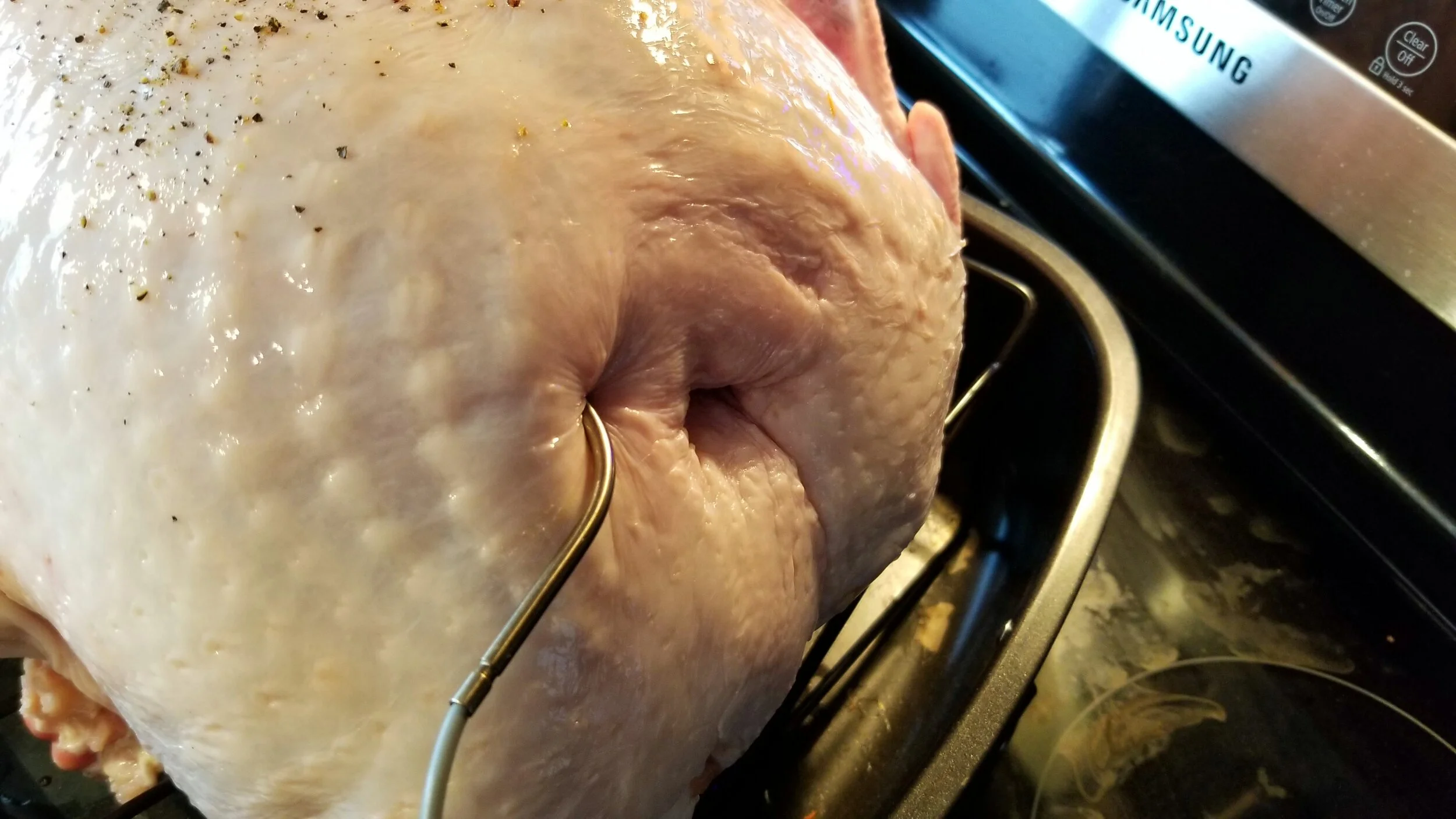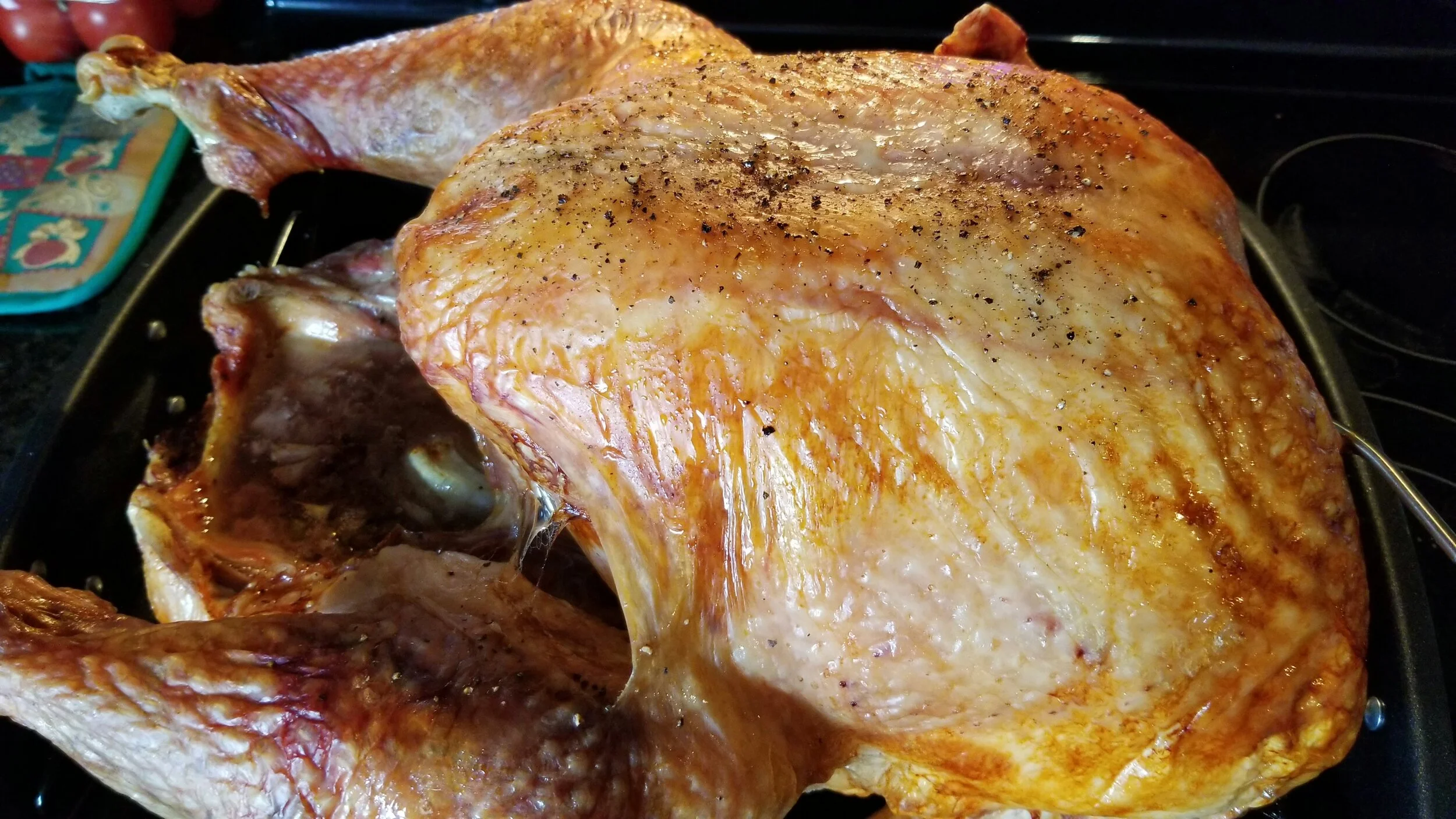How to cook a turkey that isn't dry!
Around this time of year the most popular topic seems to be about what everyone is cooking for Christmas dinner. It should come as no surprise that most of the people I spoke to were going to have turkey. What kind of surprised me though was that most of the individuals that I spoke to said that they didn’t necessarily care for turkey because they didn’t like how dry the meat was. It wasn’t the fact that people don’t like dry turkey that surprised me but I didn’t realize how common this dry turkey problem was! Anyways! I thought I had better do a blog post on how to cook a turkey that is moist!
My foray into turkey-cooking began a couple of years ago as I decided it was time to man-up and take on turkey duty! All joking aside, I wanted to tackle cooking the turkey to see what all the fuss was about and I am not the type of guy to sit around and watch my wife cook, I like to get involved!
Obviously if I was going to cook a turkey I wanted to make sure it was amazing so I did some research by watching several YouTube videos (Jamie Oliver and the Culinary Institute of America) and additionally I listened to a podcast that was all about how to cook an amazing turkey (I can’t remember the name of it at the moment).
Below is a list of Turkey Cooking Rules that I put together which are based on the videos, podcast and my own experience. Since I have now used this method to cook three moist turkeys in-a-row I am very confident that it works!
Note: All of the photos you see are from Christmas 2020 (a few days ago). The turkey I purchased was a frozen one and weighed 10.5 kg. I cooked it using the convection setting on my oven and it took 4.5 hours to cook, I then let it rest for approximately one hour.
Turkey Cooking Rules
Rule #1 Ensure that your turkey has had adequate time to defrost in the fridge (search for an online calculator to help you with this).
Rule #2 Get a Digital thermometer to ensure that you don’t overcook or undercook your turkey. When inserting the thermometer probe into the turkey ensure that it is inserted into the thickest part of the breast and not against the bone.
Turkey with thermometer probe inserted.
Rule #3 Once you unwrap your turkey remove anything that is in the carcass, rinse the turkey off and then pat it dry with a paper towel. Once you have done this apply a light coating of olive oil to the skin and then apply some ground black pepper.
Rule #4 Cook at 325F for however long you need to to reach an internal temperature of 165F. If your oven as has the convection-roast option use it as it will speed up the cooking time.
Rule #5 Use a pan with a grate to ensure airflow around the entire turkey. Additionally, who wants the bottom of their turkey to be soaking in fat?
Rule #6 Don’t make your stuffing in the turkey. Say what!? Yes that’s right! To ensure better airflow and therefore quicker cooking times do not cook your stuffing in the turkey. In addition, there is a greater chance of food poisoning if you make your stuffing in the turkey (unless you check that the middle of the stuffing has reached an internal temperature of 165F).
Rule #7 Fill the turkey half full with aromatics such as lemon, garlic, celery, thyme, rosemary and apple.
Turkey half-stuffed with aromatics.
Rule #8 Do not baste as this slows down the cooking-time and the skin won’t crisp.
Rule #9 Let the turkey rest for at LEAST 30 minutes after cooking and make sure to tent it with foil. This is extremely important for ensuring a moist turkey. Allowing a turkey to rest after it’s cooked lets the juices redistribute throughout the meat. Apparently famed chef Gordon Ramsey lets his turkey rest for a couple of hours.
Turkey just removed from the oven.
Turkey resting with a tent of foil over top of it.
Rule #10 For the first 2/3 of cooking time cover the turkey loosely with foil to prevent over-browning then remove the foil for the last third of the cooking time.
Rule #11 Remove the entire breast and cut across the grain as this will make chewing easier as you aren’t trying to chew long strands of muscle fiber.
Turkey breast removed from one side of turkey.
Turkey breast removed and ready for slicing.
Conclusion
As you can see cooking a great turkey isn’t really that complicated. I urge you to try cooking your turkey by following the rules above. I would love to know how your next turkey turns out so please let me know!
Oh and in case you are wondering if I made soup-stock with the carcass, I sure did!
Please share this with someone you know that could benefit!







